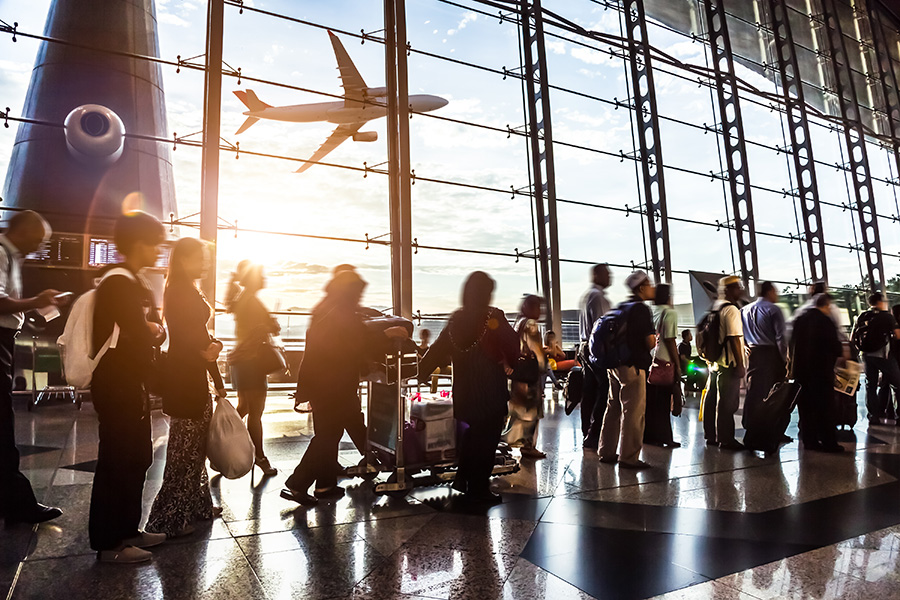 Itaca might be mistaken for a sunny Greek island, but it is actually the name of a SESAR 2020 exploratory research project, which examined the barriers to and drivers for technology uptake in air traffic management. David Mocholí González, project coordinator, provides a brief overview of the project’s core objectives and findings.
Itaca might be mistaken for a sunny Greek island, but it is actually the name of a SESAR 2020 exploratory research project, which examined the barriers to and drivers for technology uptake in air traffic management. David Mocholí González, project coordinator, provides a brief overview of the project’s core objectives and findings.
What are the barriers to implementing/and what are the drivers?
We consider as barriers any technological, regulatory or behavioural factor that prevents or slows down the adoption of new ATM technology. For example, the complexity of the ATM system and the reluctance towards change in the industry is just one of the identified barriers. The drivers, on the contrary, are the mechanisms that facilitate that a certain technology is adopted by stakeholders. For example, a technology that results in a reduction in fuel consumption provides an incentive to airlines to adopt new ATM solutions.
What incentives are currently used to encourage market take-up? Why don’t they work?
Historically, technological change in ATM has taken place at a slow pace. There are many reasons that may explain this protracted approach to modernisation. Advances in technology alone is not condition enough for market uptake. Currently, mandates have been the most extended way of encouraging technology adoption. The wide variety of stakeholders involved and the lack of enforcement makes that, in some cases, the market does not respond as fast as expected.
What is the rationale for the ITACA project?
It is clear that the right regulatory and policy framework need to be in place to facilitate and foster the implementation of technologies. In ITACA, we examined what those policies and regulations are that could help spur market uptake and benchmarked them using an agent-based model of the European ATM system. The model has been validated through participatory experiments involving industry experts.
What are the main insights and policy recommendations derived from the project?
The project assessed policies according to three use cases: technologies that had a low or slow adoption rate; technologies that were adopted at the expected rate and future technologies. The results show that the adoption of each technology responds differently to policy measures and no individual policy outperformed others across all the areas included in the performance assessment technology adoption effectiveness, economic performance and operational efficiency), while the combination of economic incentives (e.g. cost-plus pricing, subsidies) and enforcement through mandates provided the best results in terms of economic and operational benefits.
Who is involved in your project? Why is it important to have a variety of stakeholders?
The project iinvolves CRIDA, experts in ATM research; TML, an SME focused on transport economics; KTH, a top European university involving experts in participatory simulation; and Nommon (project coordinator), a company with a sound background in transportation modelling. This variety of backgrounds provides a transversal vision of the challenges and potential solutions.
What are the next steps?
The next steps are to communicate and validate with key stakeholders the main insights and policy recommendations derived from the project. In order to do so, we are organising a stakeholder workshop in Brussels on 19 October. Stay tuned for more details!
What are the expected benefits of your research? Who stands to benefit?
We expect that our research will provide a (i) better understanding of change and barriers of change in ATM, (ii) recommendations on how to facilitate change in ATM, (iii) facilitate acceleration of the deployment of new technologies better fitting stakeholder needs, and (iv) supporting the European ATM Master Plan performance ambitions enabled by SESAR Solutions. The benefits impact all stakeholders in the aviation industry and, eventually, society as a whole.

This project has received funding from the SESAR Joint Undertaking under the European Union's Horizon 2020 research and innovation programme under grant agreement No 893443
